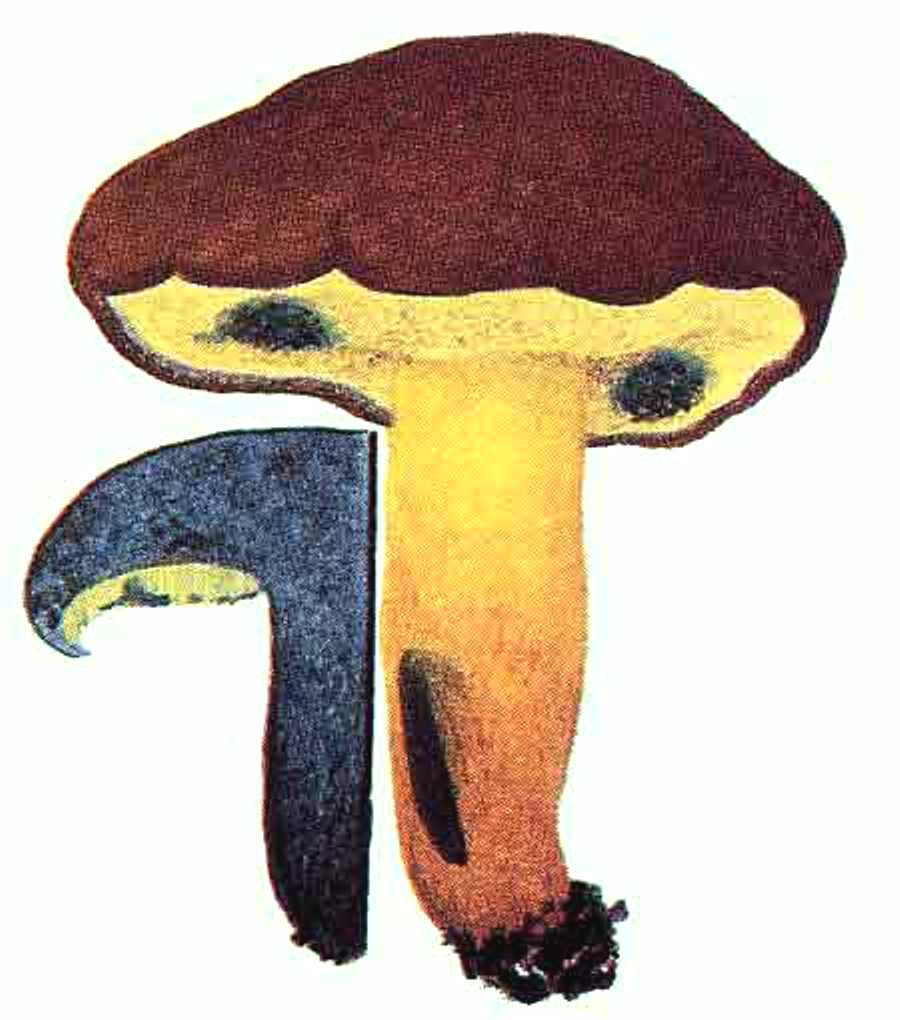Cyanoboletus pulverulentus
Cyanoboletus pulverulentus
The Cyanoboletus pulverulentus (Cyanoboletus pulverulentus (Opat.) Gelardi, Vizzini & Simonini 2014) is a symbiotic mushroom belonging to the Boletaceae family.
Systematics –
From the systematic point of view it belongs to the Eukaryota Domain, Kingdom Fungi, Basidiomycota Division, Basidiomycetes Class, Order Boletales, Cyanoboletus Family and then to the Cyanoboletus Genus and to the C. pulverulentus species.
The terms are synonyms: Boletus pulverulentus Opat. 1836 and Xerocomus pulverulentus (Opat.) E.-J. Gilbert 1931.
In 2014, with the support of phylogenetic analyzes, the species was segregated in the neogenerian Cyanoboletus of which it represents the type species. The carpophores belonging to this genus, as can be deduced from the name, have the characteristic of having an intense blue reaction to the cut or to the bruise.
Etymology –
The term Cyanoboletus is the composition of the word cyano which is a Latin word derived from the Greek κύανος, ie blue, and from boletus, then blue-colored boleto. The specific epithet pulverulentus, comes from pulvĕrŭlentus, dusty, covered or full of dust (derived from pulvis powder), that is, from the appearance dusty, powdery.
Geographic Distribution and Habitat –
The Cyanoboletus pulverulentus grows under broad-leaved and coniferous trees and fructifies in the period between summer and autumn.
Recognition –
This fungus is recognized for the hat of 6-13 cm in diameter, globose, circular or sub-elliptical, with cuticle that can not be separated from the hat, velvety, smooth with dry weather, of ocher to dark brown color that turns to blue – Tastes to the touch. The margin is regular, sometimes lobed and involute, slightly exceeding. The pores are minute, round, soon angular, yellowish-green and touch virano to blue. The tubules are up to 12 mm long, adnate, yellowish-green and touch virano to blue. The stem measures 4-9 x 1.5-3 cm, slender, smooth, rarely ventricose, attenuated towards the base, sometimes radiating, yellow in the upper part, darker, concolor to the hat, in the middle part, whitish towards the base that touches quickly to dark blue. The meat is compact, yellow, when cut or touch quickly turns to blue, after about 15 minutes it becomes grayish-black but with time it tends to go back to yellow and has a fungal smell and sweet taste. Under the microscope there are spores of 10-14 x 4-5.5 μm, fusiform, olivaceous to the microcopio, brown in color. The basidi are tetrasporici, claviformes, of 45-55 x 8-12 μm. The cysts are fusiform, with granulations, 40-50 x 5-8 μm.
Cultivation –
Cyanoboletus pulverulentus is not a cultivated fungus.
Uses and Traditions –
This species is characterized by being free of reticule on the stem and easily recognizable because every part of it touches intensely and quickly to blue. It is edible, although not among the best. The Cyanoboletus pulverulentus appears in the popular texts in “denigratory” photos in which it appears constantly ugly and dirty, perhaps due to “respect” of its specific name. Key features are its yellow color and the violent and immediate dark blue toning of all its parts on contact. The meat first turns to dark bluish and then to greyish-black.
Preparation Mode –
The Cyanoboletus pulverulentus is a fungus of fair edibility and also for this reason it lends itself well to being consumed in the mixture. It can be preserved, always mixed dried or in pickles.
Guido Bissanti
Sources
– Wikipedia, the free encyclopedia.
– Cetto B., 2008. Real mushrooms, Saturnia, Trento.
– Pignatti S., 1982. Flora of Italy, Edagricole, Bologna.
– Conti F., Abbate G., Alessandrini A., Blasi C. (edited by), 2005. An annotated checklist of the Italian vascular flora, Palombi Editore.
Warning: Pharmaceutical applications and alimurgical uses are indicated for informational purposes only and do not in any way represent a medical prescription; there is therefore no liability for their use for curative, aesthetic or food purposes.


